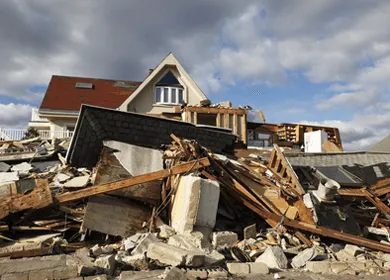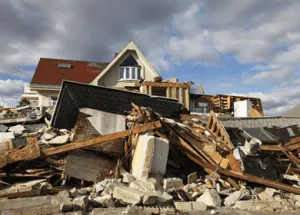
- Share on Facebook1
- Share on Pinterest
- Share on Twitter
Q: My cousin lives in Hoboken, N.J., and he’s digging out after Sandy. How important is it for him to use a facemask to protect himself from the mold? – Anna K, Easton, Pa.

A: You don’t have to be swept away by Sandy to be concerned about the health risks that come along with standing water and soggy interiors. But your cousin (and anyone else who cleans out a flooded basement) should be on his toes after floodwaters recede. Water contaminated with raw sewage is a greater concern than mold in the short term. It can harbor infectious diseases and chemical hazards. Mold, which develops after the water-soaked interior festers for a while, can trigger severe allergic reactions and eye and skin irritation. It is especially dangerous for children and people with asthma or a weakened immune system. In the U.S., floods generally do about $6 billion in damage a year; Sandy’s toll was much higher than that.
The Centers for Disease Control & Prevention’s suggestions for a safe cleanup are:
-Keep kids and pets away until you’re finished cleaning up.
-Wear rubber boots, gloves, goggles and a mask (that’s our addition – especially important for mold).
-Remove anything contaminated that can’t be washed and disinfected: mattresses, carpeting, stuffed animals, pillows, books and other paper products.
-Remove any contaminated or wet drywall.
-Thoroughly clean every surface, appliance and all wood and metal furniture with hot water and laundry or dish detergent.
 -Dry everything using fans, AC units and dehumidifiers.
-Dry everything using fans, AC units and dehumidifiers.
Then, clean the cleaner! Wash hands with (disinfected) warm water and soap, or in a solution of 1/8 teaspoon of household bleach per 1 gallon of water. Wash all clothes in a laundromat – put your work clothes in separate loads – until you know your water is certified safe.
– Dr. Michael Roizen & Dr. Mehmet Oz
© 2012 Michael Roizen, M.D. and Mehmet Oz, M.D. Distributed by King Features Syndicate, Inc.
- Share on Facebook1
- Share on Pinterest
- Share on Twitter

